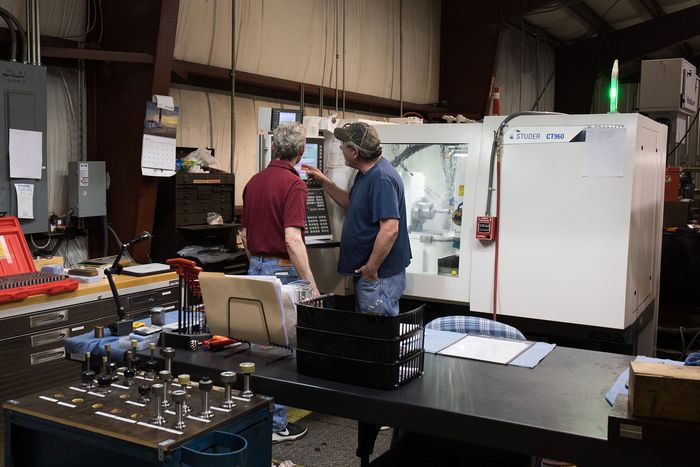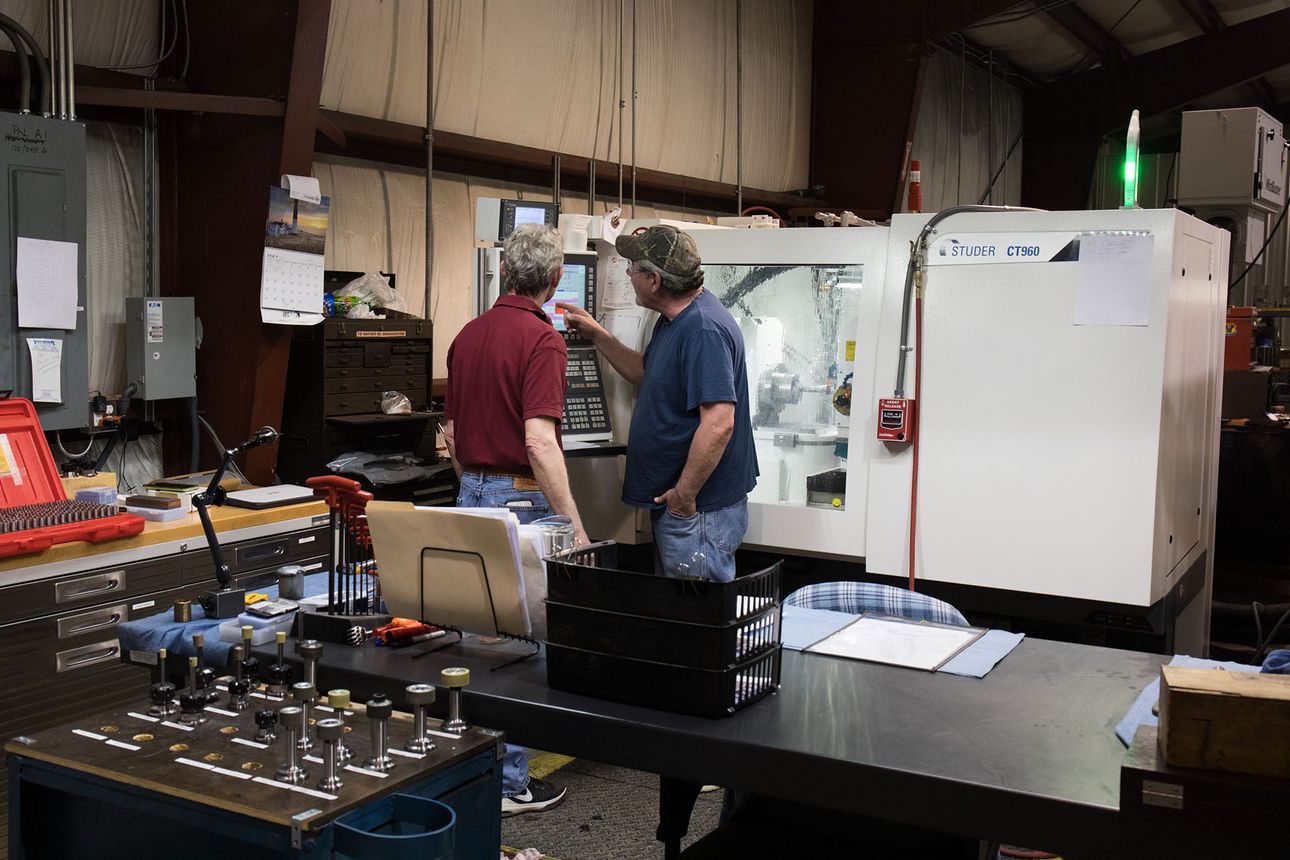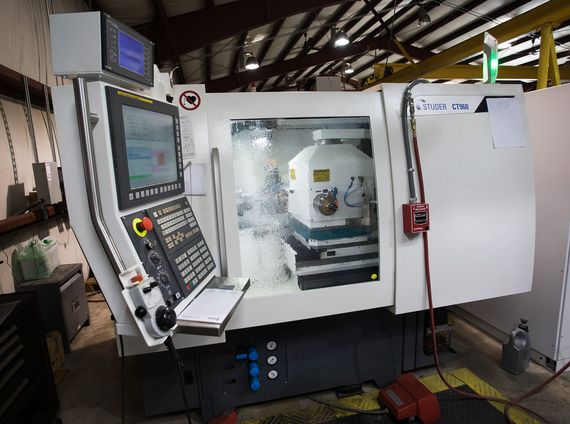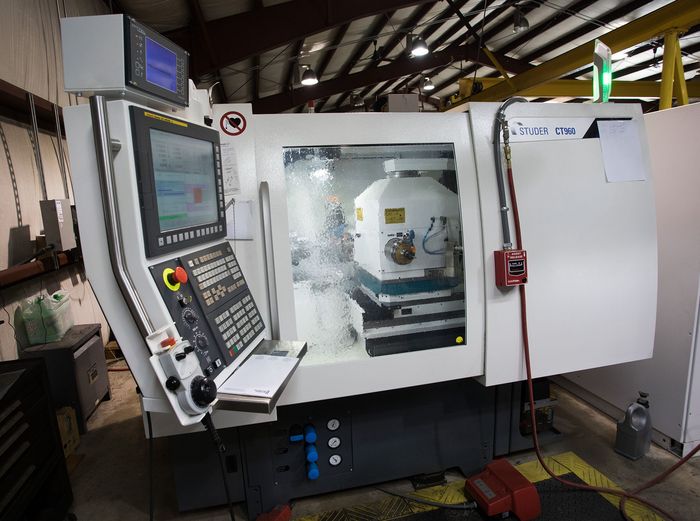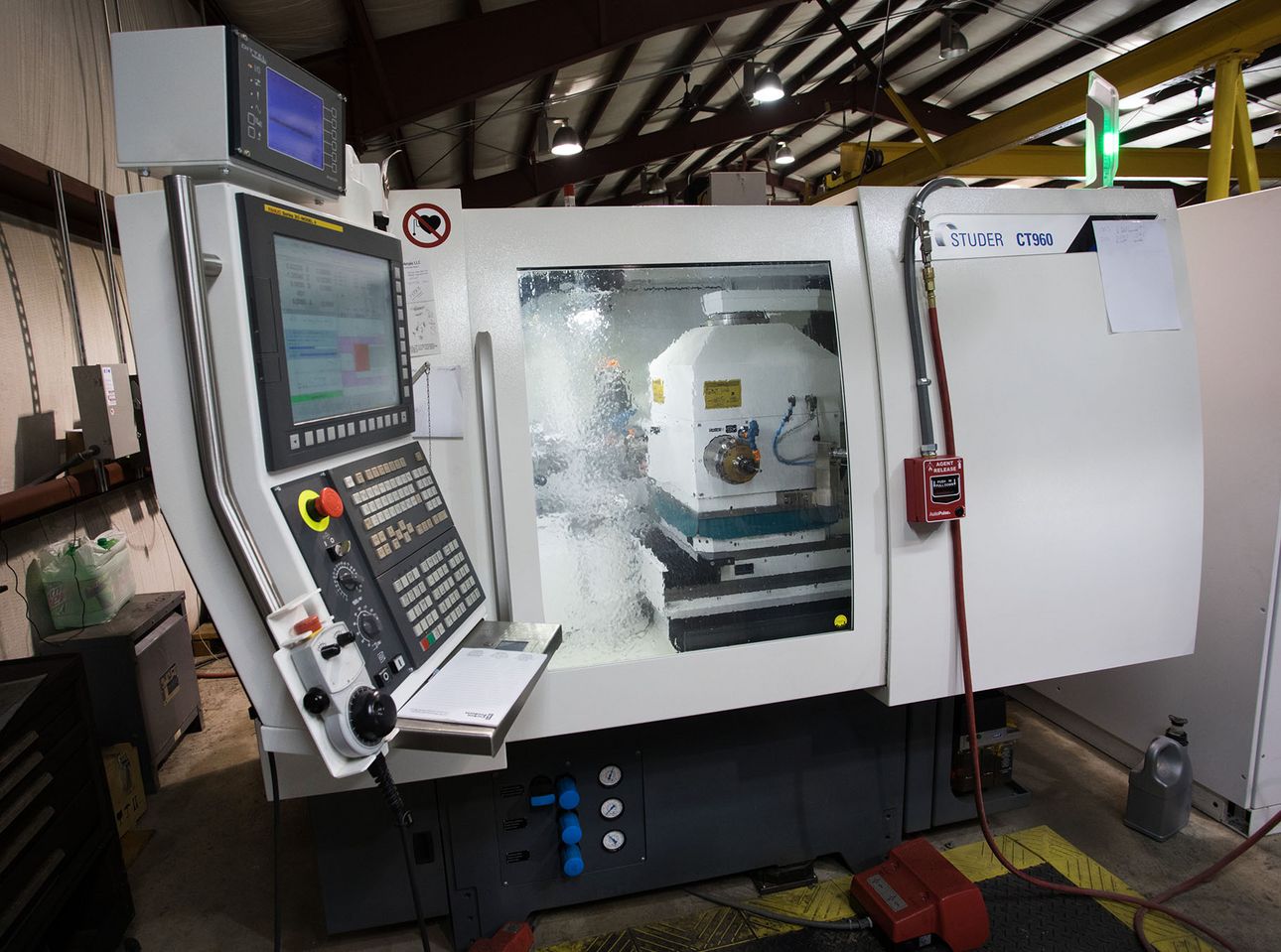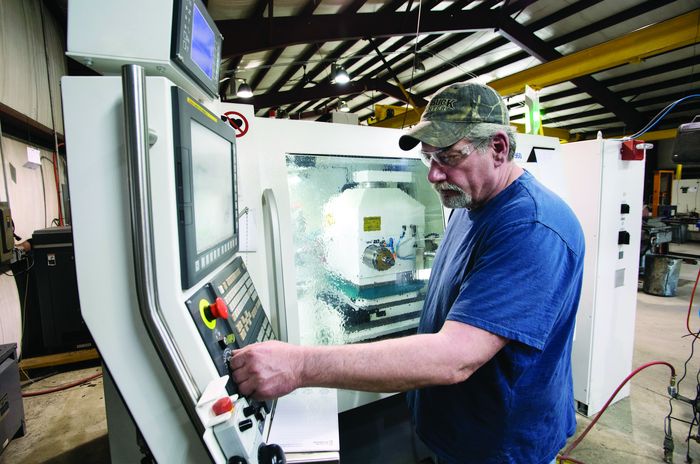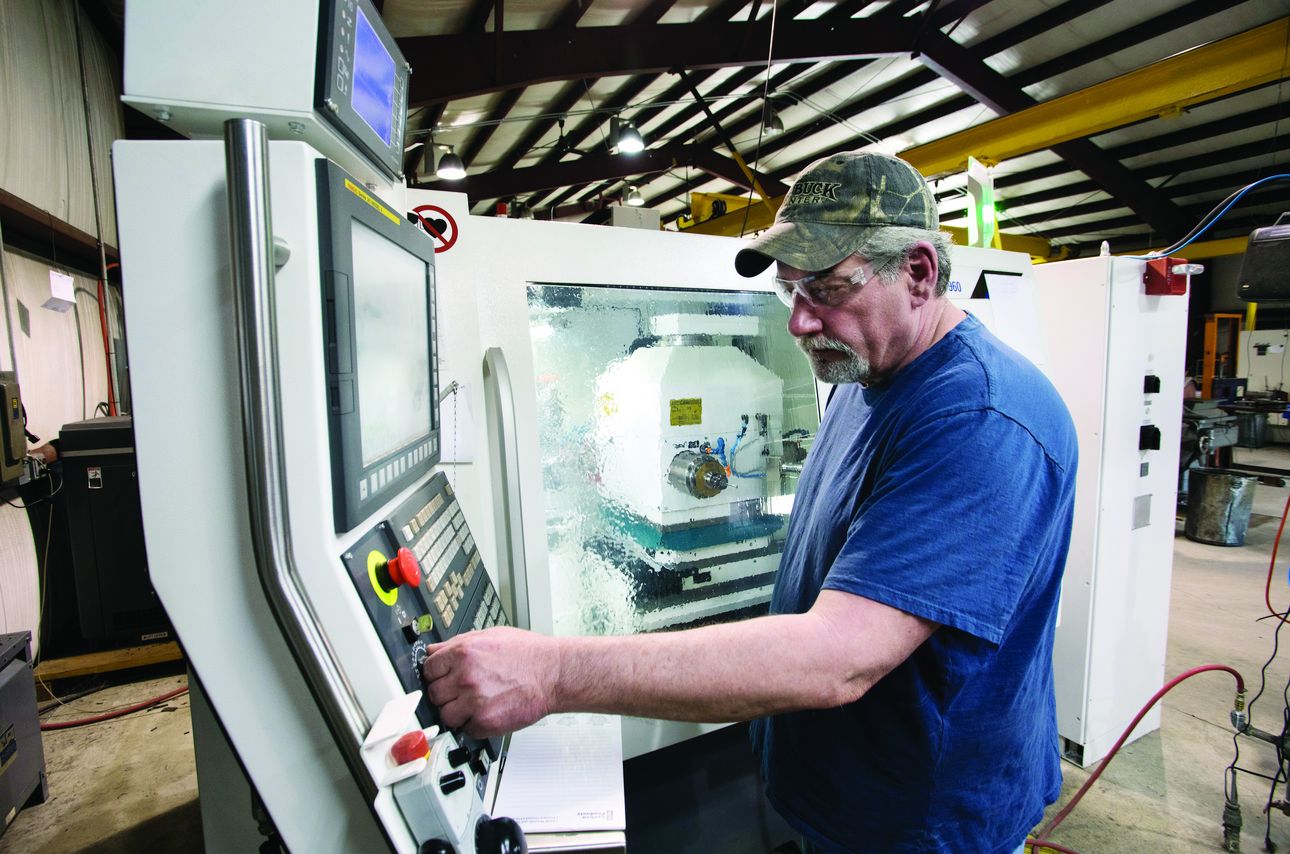Shop Turns Feel Into Facts for High-Precision Carbide Grinding
Feel versus facts is how Glenn Bridgman, president of Bridge Tool and Die, describes the difference between his shop’s manual grinders and its newest state-of-the-art CNC ID/OD grinder. He believes that manual grinding is a somewhat personal operation because the machinists are physically closer to the process and can hear and “feel” it. While on the other hand, he said that today’s advanced CNC grinding technology turns that expert feel into facts and ensures a much more repeatable process as well as significantly boosts the shop’s workpiece consistency, quality and precision, along with its overall production output.
With a substantial background in grinding, Bridgman bought the company he had been working for and created what is now Bridge Tool & Die in Buckley, Michigan. And with the purchase of that shop came decades upon decades of grinding experience, in particular with carbide, which remains the shop’s specialty to this day. Although, it has also recently expanded processing capabilities to steel milling and turning operations with the acquisition of a general machining shop across the street about three years ago.
The shop’s specialty is grinding carbide and encasing it in steel for the tooling used in various high-volume production extruding and forming processes. Bridge Tool & Die produces such tooling and other components for the mold and die, oil and gas and automobile industries among several others.
“Carbide is extremely hard material to grind,” explained Bridgman, “and it requires diamond grinding wheels. But most importantly, the process involves much more finessing in terms of speeds, feeds and material removal rates. This is why we acquired the CNC technology. We not only needed predictability and consistency but also to increase our capacity.”
Bridge Tool & Die’s new CNC grinder is a Studer CT960 from United Grinding that does both ID and OD grinding. Its indexable head houses three ID spindles and one OD, plus a probe. The shop can run an operation, have the probe check the part and if needed tweak the program on-the-fly.
For Bridge Tool & Die, the Studer CT960 dramatically shortens setup times and most importantly eliminates the need to move parts between – in some instances as many as five – separate OD machines then to one that does ID grinding. Instead of these five individual setups on five different machines for one component, the Studer CT960 completes the part in a single setup.
For its wheels, the shop uses a variety of wheels ranging from metal bond to vitrified and those for finishing. Once wheels are qualified, part setups are even faster. Wheels can be loaded, unloaded and reloaded again and be in the exact location every time.
Many parts require small ID ground holes, which is why, according to Bridgman, the shop craves speed and gets it from the new Studer CT960. He explained that the smaller the grinding wheel and smaller the hole being ground, the higher the spindle speeds required. Higher speeds allow the small wheels to stiffen and grind even better, and for this, the machine delivers 42,000 rpm, 45,000 rpm and 60,000 rpm spindle speeds. The shop also has the option to boost its top speed to as fast as 90,000 rpm.
How the Studer CT960 turns feel into facts, according to Bridgman, is through its StuderGRIND software. It shows wheel position, spindle speeds and feeds and wheel pressure. Plus, it allows the shop to run simulations to avoid any problems during actual part runs. As a result, the software makes programming very easy and is user friendly.
“We considered other grinder brands, but from a quality point of view,” said Bridgman, “the Studer CT960 was far beyond the others, especially in terms of precision and software. The StuderGRIND software really sets the machine apart from the competition because, quite frankly, it is a software designed specifically for the grinding process, as opposed to others that try to adapt conventional milling or turning machine software to grinding operations.”
In addition to its software, according to Greg Mort, business manager at Bridge Tool & Die, the Studer CT960’s B-axis has also been a game changer for the shop when it comes to grinding radii. It allows the workpiece to swivel as it’s being ground and thus produces perfect radii.
“Especially beneficial for part radii, the machine eliminates the need for secondary, extremely time-consuming hand polishingto achieve required surface finishes, and it does so about three times faster,” commented Mort. “Whatever the amount of time it takes for hand polishing a part, the Studer CT960 can produce the same surface finish three times faster. Instead of spending all that time hand polishing, we simply give those parts coming off the Studer CT960 a quick buffing, and they are ready to ship.”
For Patrick O’Halloran, CNC programmer and operator of the Studer CT960 at Bridge Tool & Die, the learning curve for the machine was barely five months. “We did training at United Grinding, then they came to the shop for even more training and to help us further optimize our processes,” he said. “This allowed us to take full advantage of the machine’s capabilities, some of which we have yet to even use. But we are quickly progressing along the learning process and continue to do more and more with the machine.”
Unlike that of its customers, Bridge Tool & Die’s production environment is one of high-mix/low-volume averaging about 300 jobs per month. Typical lot sizes range from one piece to blanket orders of 30 parts per month, and over 80 percent of the shop’s customers are repeat ones with recurring orders.
“We build special relationships with our customers mainly because we are all involved with carbide in some way, and they know that there are few shops that specialize in the material, especially grinding it,” explained Bridgman.
Most carbide inserts are shrink fit into mating steel casings. Doing so is cost effective for customers because only the high wear sections are carbide as opposed to the whole component. Smaller parts, on the other hand, are often made completely from carbide. And almost all parts require mirror surface finishes of between 2 to 4 micros.
For its customer parts, the shop does all necessary operations. It turns the steel cases, grinds the carbide and assembles the two portions for a finished component. Part tolerances are typically around +/- 0.0002”, and some are as tight as +/- 0.0001”.
Besides the incorporation of advanced grinding technology such as the Studer CT960, Bridge Tool & Die has arranged several grinding cells, or work centers, on its shop floor. These cells have several machines in close proximity and allow one operator to run multiple machines.
“Having such work stations with fully automatic, semi-automatic and manual machines has allowed us to really keep pace with demand using the people we have because it is has been tough to find good help these days,” said Bridgman. “So we have to be as productive as possible with what we have.”
The acquisition of the shop across the street, formerly known as American Mold, has allowed Bridge Tool & Die to diversify into the injection mold machining arena. The new space also gives them room to grow. At the second shop, Bridge is now machining tool steel components for dies and molds, mainly for plastic injection molds and aluminum extrusion.
An expansion into other machining operations has helped increase business, especially from existing customers. In addition to grinding, customers are now asking Bridge Tool & Die to do conventional milling work as well. In the past, the shop would have farmed out this type of work.
In the midst of a current boom in business, the shop already has its new Studer CT960, as well as its manual operations, practically maxed out in terms of capacity. And Bridgman already has his sights set on increased CNC grinding capacity.





